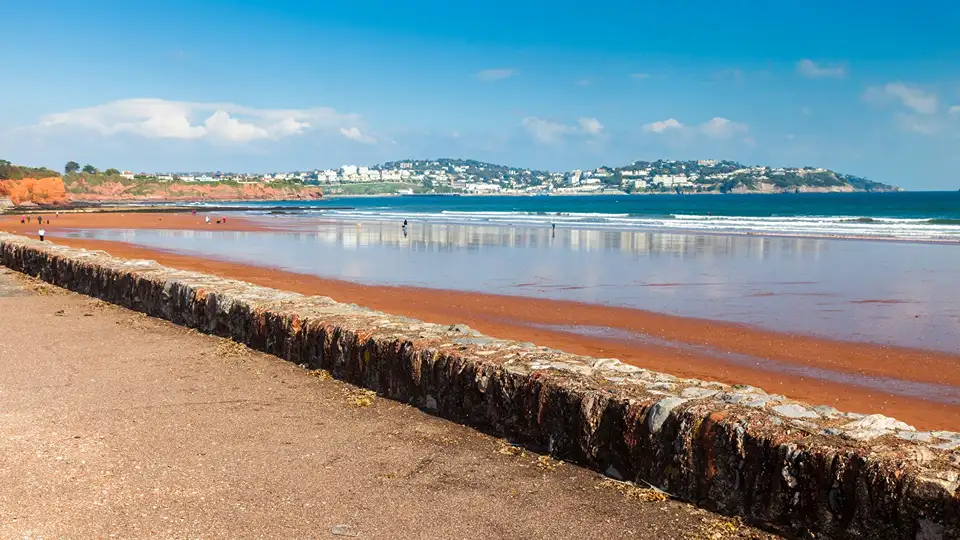Introduction
Preston Beach, located in the northeast corner of Weymouth Bay, Dorset, stands as one of the region’s most important coastal landscapes. Known for its natural beauty and recreational appeal, it is also a crucial frontline in Weymouth’s coastal defense. Over time, natural forces such as waves, tides, and wind continuously reshape the shoreline. To counter these effects, the Environment Agency (EA) has announced a beach recycling project at Preston Beach, an initiative designed to restore balance and strengthen the beach’s defenses.
This project will see machinery reposition sand and gravel from the north end, near Furzy Cliffs, back toward the Greenhill rock groyne, reinforcing areas where material has been lost through natural movement. Understanding why this work is essential begins with one powerful process: longshore drift.
What Is Longshore Drift?
Longshore drift is the gradual movement of sand and sediment along a coastline, driven by the angle at which waves strike the shore. When waves approach the beach at an angle, they carry material up the beach (swash) and then drag it back down (backwash) under the influence of gravity. This repetitive action causes sand and gravel to move laterally along the shore.
Over months and years, longshore drift can significantly alter the shape and profile of a beach. While it is a natural and ongoing process, it can also create challenges for coastal areas like Preston Beach, where sediment naturally shifts northward, leaving southern areas more exposed to erosion.
The Impact of Longshore Drift on Preston Beach
The shape and orientation of Preston Beach, stretching 1.4 kilometers from the Greenhill rock groyne to Bowleaze Cove, make it particularly susceptible to sediment displacement. Winds and waves moving along the Dorset coastline gradually push beach material northward toward Furzy Cliffs.
As a result, the southern end of the beach, closer to Greenhill, often experiences sediment loss, reducing the natural buffer that protects underlying sea defenses. When these defenses become exposed, they face increased pressure from wave energy, particularly during the winter months. Over time, this can lead to coastal damage, road instability, and higher maintenance costs.
The upcoming beach recycling project aims to reverse these effects by redistributing sand and gravel back to the areas that need it most.
The Need for Beach Recycling at Preston Beach
Unlike large-scale nourishment projects that import material from external sources, beach recycling uses sediment already present within the beach system. It is an environmentally efficient and cost-effective method of maintaining coastal balance.
At Preston Beach, this process is essential because longshore drift continuously moves material northward, disrupting the natural equilibrium. Without intervention, erosion would gradually expose hard defenses and reduce the beach’s ability to absorb wave energy. Recycling the sand and gravel restores this equilibrium, ensuring the beach remains a natural barrier against storm surges and tidal forces.
The Environment Agency’s Recycling Scheme
The Environment Agency’s planned beach recycling scheme is scheduled to begin on November 7, with operations expected to last just over two weeks, weather permitting. During this period, heavy machinery will move sediment from the northern section near Furzy Cliffs back toward the southern and central parts of Preston Beach.
The recycled material will reinforce areas near Greenhill, where erosion has reduced the beach’s height and width. By restoring these sections, the EA aims to strengthen the underlying coastal defenses and improve the beach’s resilience to winter storms and wave overtopping.
This targeted redistribution not only protects vital infrastructure such as the B3155 Preston Beach Road but also preserves the recreational and ecological value of the beach for residents and visitors.
Protecting Coastal Defenses and Infrastructure
Coastal defenses in the Weymouth area are designed to work in harmony with the natural shoreline. However, when longshore drift displaces beach material, these defenses lose part of their protection. By implementing beach recycling, the Environment Agency ensures that Preston Beach retains sufficient sediment to shield its sea walls and barriers.
The sand and gravel act as a natural cushion, absorbing the energy of incoming waves before they reach hard structures. This process reduces maintenance costs, extends the lifespan of the defenses, and minimizes the risk of flooding and road damage along the adjacent highway.
Environmental and Community Benefits
The benefits of the Preston Beach recycling scheme extend beyond erosion control. By maintaining a healthy and balanced beach profile, the project supports the local environment and enhances the area’s appeal for tourism and recreation.
Preston Beach is a popular destination for walking, water sports, and family outings. Ensuring its stability means preserving a safe and attractive shoreline for residents and visitors alike. Moreover, sustainable beach recycling minimizes environmental impact by using existing materials and avoiding the carbon footprint associated with importing new sand.
The initiative also highlights the importance of proactive coastal management, addressing natural changes before they become critical threats.
Lessons in Coastal Management
The Preston Beach project serves as an educational example of how natural coastal processes and human intervention can work together. Rather than fighting longshore drift, engineers are using its effects as a guide to efficiently redistribute materials.
This approach demonstrates how localized solutions, such as beach recycling, can maintain equilibrium without altering the natural dynamics of the coastline. For students, environmentalists, and engineers, Preston Beach provides a real-world case study in sustainable coastal engineering and adaptive management.
Conclusion
Longshore drift will always play a defining role in shaping Preston Beach, continuously shifting sand along its 1.4 km stretch of coastline. Yet with responsible measures such as beach recycling, this natural process can be managed to protect both the environment and the community.
Through the Environment Agency’s efforts, Preston Beach will remain a strong, resilient barrier against erosion and wave damage, preserving Weymouth’s coastal heritage for generations to come. The project serves as a reminder that when science, engineering, and environmental care align, coastal protection becomes both sustainable and effective.
